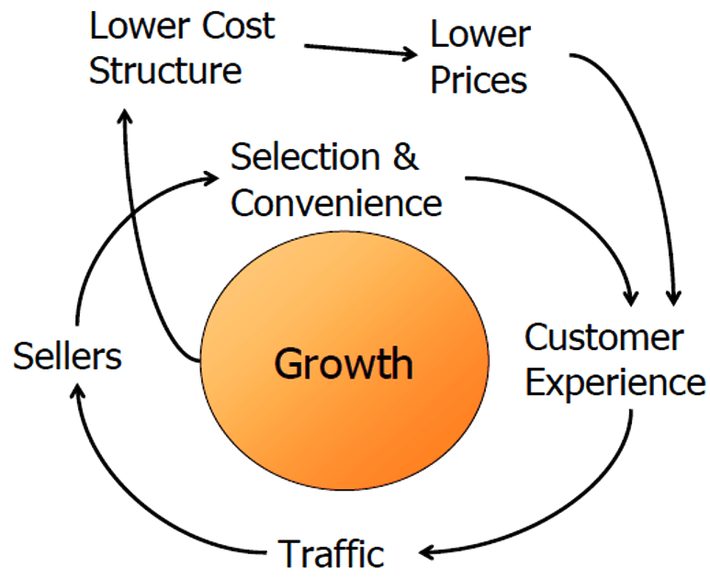Summary: Whether you’re a data scientist building an implementation case to present to executives or a non-data scientist leader trying to figure this out there’s a need for a much broader framework of strategic thinking around how to capture the value of AI/ML.
 There are many articles written from a tools perspective about how to take advantage of specific capabilities of AI. Those encompass for example chatbots from NLP or image classification based on CNNs. To be clear, I’m talking about the expanded definition of AI that should more correctly be called AI/ML since the more mature field of machine learning is full of good implementation lessons ranging from marketing to fraud to forecasting.
There are many articles written from a tools perspective about how to take advantage of specific capabilities of AI. Those encompass for example chatbots from NLP or image classification based on CNNs. To be clear, I’m talking about the expanded definition of AI that should more correctly be called AI/ML since the more mature field of machine learning is full of good implementation lessons ranging from marketing to fraud to forecasting.
But whether you’re a data scientist building an implementation case to present to executives or a non-data scientist leader trying to figure this out there’s a need for a much broader framework of strategic thinking around how to capture the value of AI/ML. And specifically how to do that faster and better than your competitors who are also having this same conversation.
Let’s start by just enumerating the broad categories of AI/ML business models. Most of us agree there are at least these four.
- AI/ML Infrastructure
 From the beginning of this technology and throughout its growth there have been a variety of companies providing us with ever easier and more capable ways to implement AI/ML. These include the major cloud and tool providers Google, AWS, and Microsoft, the analytic platforms like SAS, Alteryx, and KNIME, and those practicing in specific niches like data prep, and streaming/IoT platforms.
From the beginning of this technology and throughout its growth there have been a variety of companies providing us with ever easier and more capable ways to implement AI/ML. These include the major cloud and tool providers Google, AWS, and Microsoft, the analytic platforms like SAS, Alteryx, and KNIME, and those practicing in specific niches like data prep, and streaming/IoT platforms.
More recently there’s been an explosion of AML (automated machine learning) and even ADL (automated deep learning) platforms seeking to make these development processes less labor intensive and more consistently successful.
This segment is pretty mature and while new innovations will continue to arise, it’s likely that any new entrants in this ‘tech enabler challenger’ category will be quickly swept up and integrated into the majors. At this fairly late date you probably weren’t thinking of trying to compete here anyway.
- AI-First Full Stack Vertical Platforms
Particularly in the startup world, VC backed companies emerged and are still emerging with the goal of helping larger incumbents improve profitability or competitiveness within a specific vertical industry. There are a few examples of successful horizontal competitors but the majority of successful examples combine AI/ML expertise with domain expertise, data dominance, and focus on helping large established incumbents with well-defined process solutions within a specific industry.
“AI-First” is a much over used phrase but when correctly interpreted is valuable in defining where you stand in your AI/ML implementation journey. Simply put, AI-first means that the solution simply would not function without its foundational AI/ML application. This is separate from an already successful application with elements of AI/ML simply grafted on.
Interestingly, essentially none of these companies has yet to scale. For starters they are by definition fairly young, in the range of 4 to 6 years at most but none are yet of major industry scale. Some have been successful as standalones like Zest Finance and Drive.ai. Others like Blue River Technology in agriculture acquired by John Deere have already been absorbed by the incumbents they sought to help.
This trajectory of quick M&A is actually foundational to the financial structure of this group as it allows for declaring relatively quick wins by investors and limits the time-risk of waiting for IPO.
But What About Existing Successful Companies
But the more interesting and difficult task is in the categories ahead. That is how and to what extent existing successful companies should incorporate AI/ML. Everyone acknowledges this is necessary, but there isn’t sufficient experience yet to define one successful strategy for this transformation.
We’ll come back to the topic of ‘transformation’ since it implies both a broad and deep change in practice and mindset. And this whole topic has acquired its own nomenclature, now generally known as a company’s ‘digital journey’ or ‘going digital’ or ‘digitization’.
The choice to use the word ‘digital’ as the core of this definition is interesting since it correctly puts the emphasis on the data and extracting value from it. What’s missing from this definition is direct reference to AI/ML. This largely recognizes that the algorithms have become commoditized (we didn’t say easy) although without the AI/ML component the value could never be realized.
The metaphor of a journey implies a beginning and an end. Clear start and finish points don’t currently exist. Similarly, the two most identifiable models really represent the extreme end points of a continuum that starts here:
- Applied AI – Optimization of the Current Business Model
The vast majority of established businesses have elected to experiment with AI/ML through carefully selected limited projects designed to reduce cost, improve margin, or enhance their customer’s experience. This is using AI/ML to optimize their current business models which are most likely designed around products or services.
There are a dozen good reasons for adopting this conservative approach. Lack of experience, limited capital and human resources, tolerance for risk, the desire for a quick win to support future projects are all valid reasons to pursue the proverbial low hanging fruit.
To put an even more positive spin on this launching ramp approach, the organizational theory of ‘absorptive capacity’ says that companies who build foundational knowledge and capabilities can absorb new ideas faster. This is walk before you run. The question however is will these organizations actually ever learn to run, or more correctly to jump.
 Throughout the history of technological evolution there are countless examples of drafting new tech onto old outmoded ways of thinking. This picture is the USS Savannah, the first steamship to cross the Atlantic in 1819. It may seem almost laughable now how the new technology was grafted onto an existing sailing ship. It was another 20 years before steamships regularly made this crossing which illustrated just how long it took to cast loose of old design paradigms.
Throughout the history of technological evolution there are countless examples of drafting new tech onto old outmoded ways of thinking. This picture is the USS Savannah, the first steamship to cross the Atlantic in 1819. It may seem almost laughable now how the new technology was grafted onto an existing sailing ship. It was another 20 years before steamships regularly made this crossing which illustrated just how long it took to cast loose of old design paradigms.
This incremental optimization isn’t unique to large established companies. There are plenty of smaller startups that have grafted AI/ML onto their existing product to enhance performance or experience. Salesforce has grafted predictive analytics onto its already successful CRM. Photoshop allow the selection of a subject with a single click using CNN based image recognition improving UX. These are valuable improvements but aimed at optimizing their current models, not transforming them.
4. Platformication – A Radical End Point for AI/ML Strategy
 Learning to jump, in terms of AI/ML strategies is perhaps best exemplified by ‘Platformication’, that is trying to replicate the unique business models of Facebook, Google, Amazon, Uber, Airbnb, and others.
Learning to jump, in terms of AI/ML strategies is perhaps best exemplified by ‘Platformication’, that is trying to replicate the unique business models of Facebook, Google, Amazon, Uber, Airbnb, and others.
Being a Platform or Ecosystem company means creating a digital and self-managed network of producers and consumers allowing you to profit from the interchange of these resources owned by others. Also known as a two-sided market, it capitalizes on the network effects of Metcalfe’s law which says the value of the network increases with the number of users.
The major platform companies above grow at near-zero marginal cost and are extremely successful at disrupting existing markets. It’s not lost on the business, investment, and academic communities that 7 of 10 billion dollar unicorn companies are platform companies.
The question of whether existing mature companies can make this transition has birthed a host of academic studies and annual conferences with thousands of attendees. This is at the core of the conversation about whether AI/ML can be transformational and not simply a method of incremental improvement.
There are some interesting examples. AXON (fka Taser) has been pivoting to an AI enabled platform for about the last three years. Their traditional Taser product was the foundation of the company but the advent of their lapel camera for police officers created the opportunity for a platform-based expansion.
AXON offers both free and paid storage for the vast amount of image data generated by their cameras and in turn is able to use AI image processing to provide a variety of new services including training their AI image recognition capabilities.
Note how sticky but inexpensive this is. Users need to store their images somewhere that are growing rapidly in volume. The more images AXON has to train and improve its AI, the more their clients will utilize their service. AXON pays nothing other than the incremental storage cost to gain huge amounts of training data.
In the mid-west, grain wholesalers have become information intermediaries collecting data from their farmer-customers about quantities and types of grain hybrids that are most successful, selling this information back to both the farmers and the major hybrid grain developers like Bayer/Monsanto.
The principle of whether and how mature companies can create parallel platform-based businesses or even pivot completely to this new model is a topic of much discussion. Although the emphasis is on a digital platform, AI/ML is at the core in its ability to find valuable patterns that either directly improve the platform or create an opportunity to invent a data product for sale. Exactly how this works a topic for another article.
Other articles on AI Strategy
The Fourth Way to Practice Data Science – Purpose Built Analytic Modules
From Strategy to Implementation – Planning an AI-First Company
Comparing the Four Major AI Strategies
Comparing AI Strategies – Systems of Intelligence
Comparing AI Strategies – Vertical versus Horizontal.
What Makes a Successful AI Company – Data Dominance
AI Strategies – Incremental and Fundamental Improvements
Other articles by Bill Vorhies
About the author: Bill is Contributing Editor for Data Science Central. Bill is also President & Chief Data Scientist at Data-Magnum and has practiced as a data scientist since 2001. He can be reached at:
